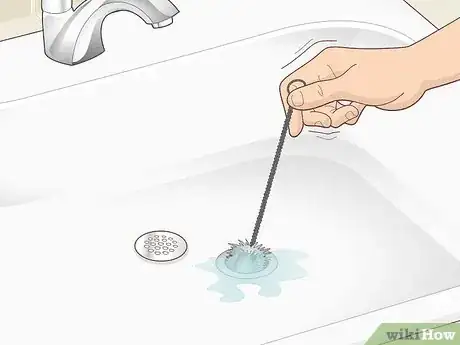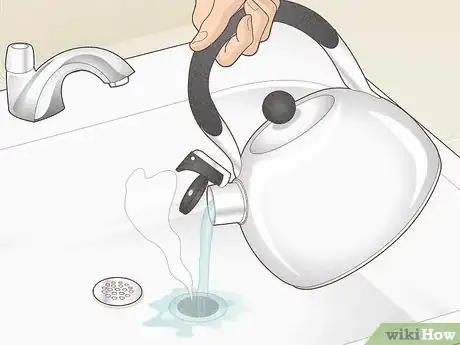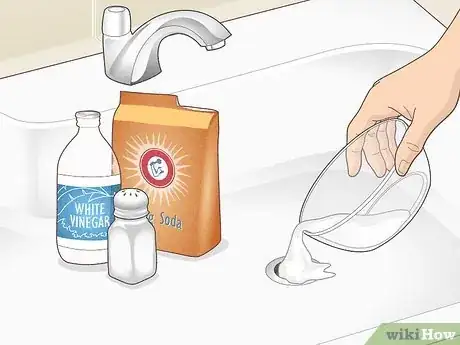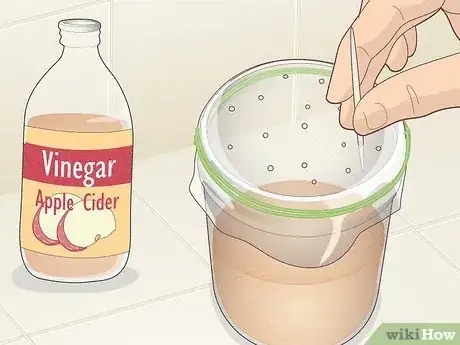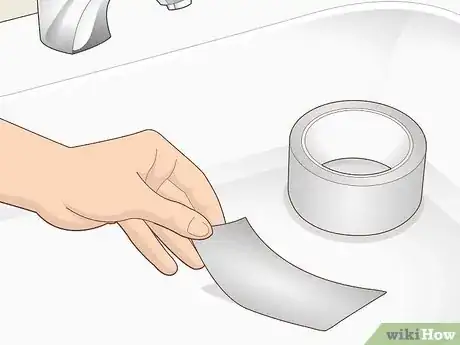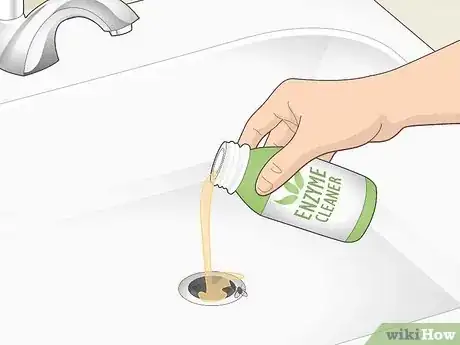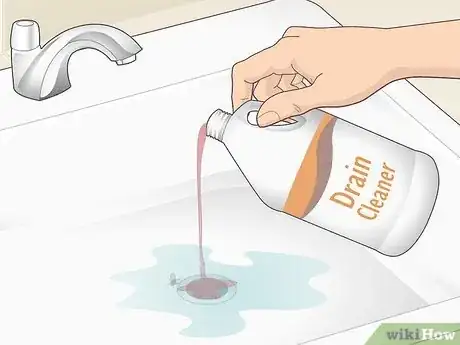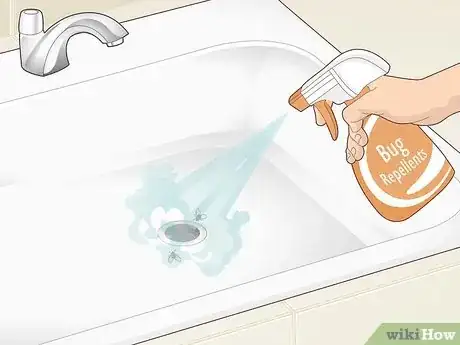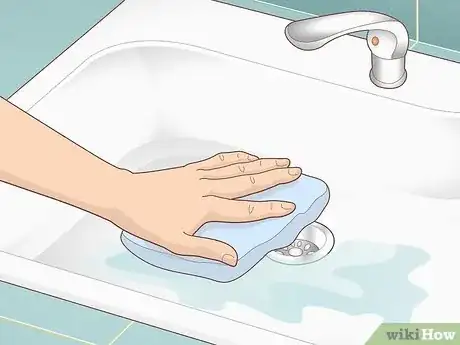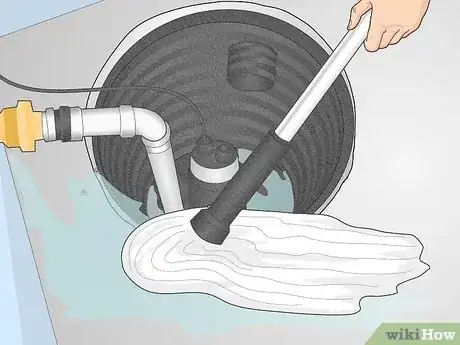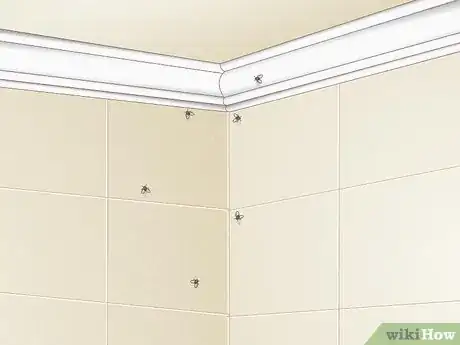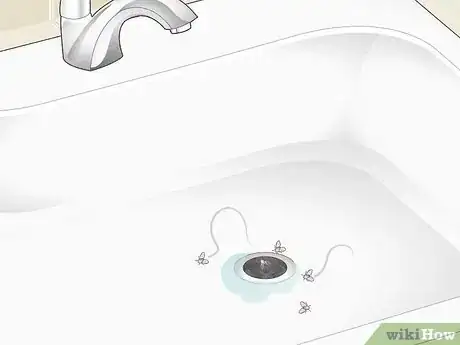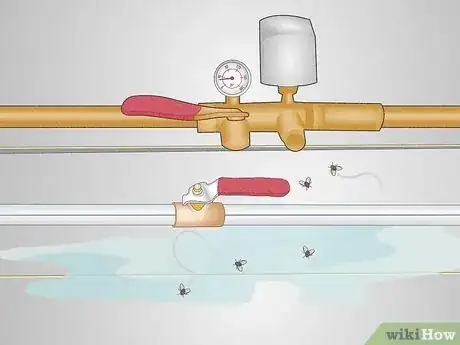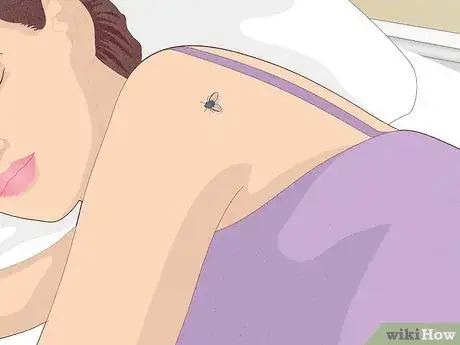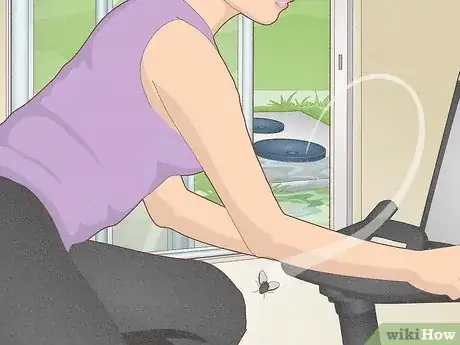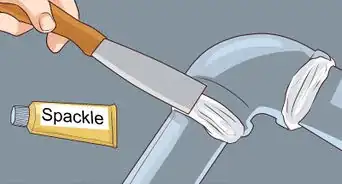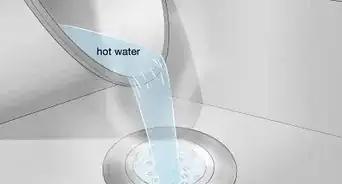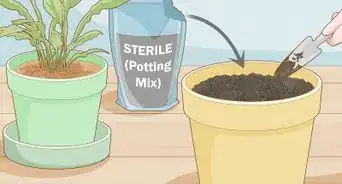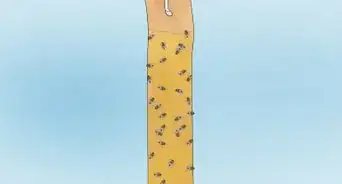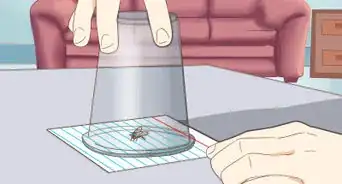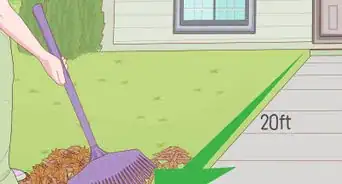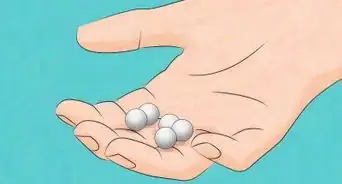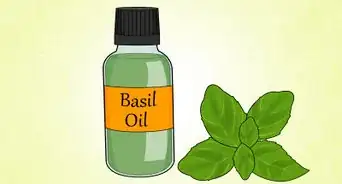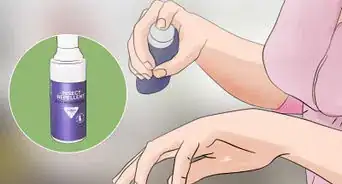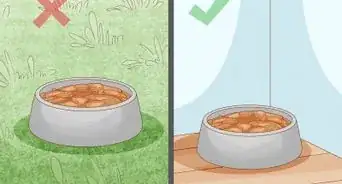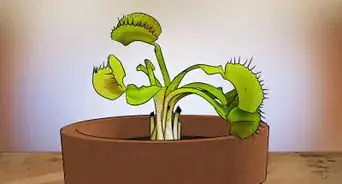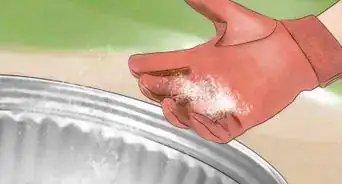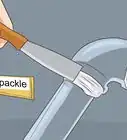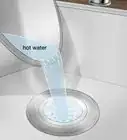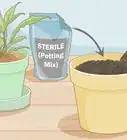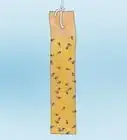This article was co-authored by Joshua Bloom and by wikiHow staff writer, Dan Hickey. Joshua Bloom is a Pest Control Specialist and the Vice President of Operations of Standard Pest Management, a pest control company based in New York City. He has over 20 years of experience in the pest control industry and specializes in commercial and large facility pest control management. Standard Pest Control also specializes in ant, bed bug, cockroach, fly, and rodent control. Joshua is licensed by the NYSDEC (New York State Department of Environmental Conservation) for termite control.
There are 10 references cited in this article, which can be found at the bottom of the page.
wikiHow marks an article as reader-approved once it receives enough positive feedback. This article received 27 testimonials and 100% of readers who voted found it helpful, earning it our reader-approved status.
This article has been viewed 2,155,354 times.
If you’ve noticed some little flies hopping around in your bathroom or kitchen, there’s a chance that your sink is now a family of drain flies’ new home. Don’t panic—we’re here to help! There are many easy ways to kill drain flies and prevent new ones from moving in. We’ve put together a thorough guide to killing drain flies with natural DIY methods and chemical cleaners, preventing new infestations, and important things to know about these fuzzy little nuisances. Read on to learn all about how to get rid of drain flies.
Steps
Natural Remedies
-
1Clean your drain manually with a pipe brush or drain snake. Removing the sludge inside your drain and pipes takes away the drain flies’ food source and prevents them from laying additional eggs. Run some warm water down the drain and then insert a pipe brush or snake as far as you can to dislodge eggs, larvae, and buildup.[1]
- The longer and more flexible your pipe brush, the better!
- If you’re treating the drain of a sink, remove the U-trap underneath and clean out any additional buildup you find.
-
2Pour boiling water down your drain. This is the simplest method for killing drain flies and clearing out your pipes. Boil a medium-sized pot of water 1-2 times per day for a week and carefully pour the water down and around your drain. The repetition will ensure the flies don’t return if your first pour didn’t remove all of the organic buildup inside.[2]
- This method is more effective for killing larvae inside the pipes than adults that can fly.
- PVC pipes can be damaged by repeated or prolonged exposure to boiling water, so it’s recommended to only use this method for metal pipes. If you have PVC pipes, stick to pipe brush cleanings and cleaners meant for kitchen and bathroom drains.
Advertisement -
3Sanitize your drain with baking soda, salt, and vinegar. This natural cleansing mixture will remove organic buildup from your pipes and kill any larvae or flies that get caught in it. Combine 1 part baking soda, 1 part salt, and 2 parts vinegar and pour it down the drain. Allow the mixture to foam up and sit overnight. In the morning, pour boiling water down the drain to clear the foam and any buildup it removed.[3]
- Start by using ½ cup (64g) each of salt and baking soda and 1 cup (250 ml) of vinegar. For deep pipes or severe infestations, increase the amounts proportionately.
- Try sprinkling the baking soda and salt in and around the dain first and then pouring the vinegar so the mixture doesn’t foam before it enters the drain.
- PVC pipes can be damaged by boiling water. Flush the vinegar mixture away with warm water from the tap if you have PVC pipes.
-
4Kill adult flies with a vinegar trap. Apple cider vinegar smells alluring to the flies and tricks them into entering a deadly trap. To make a simple trap, pour apple cider vinegar into a small dish or jar and cover it with plastic wrap. Poke several holes in the wrap with a toothpick or pin—the flies will be lured into the trap through the holes but will not be able to escape.[4]
- Add a chunk of overripe fruit to the vinegar to make the bait extra appealing. A few drops of dish soap makes it harder for the flies to escape the vinegar.
- Another trap can be made by mixing water, sugar, apple cider vinegar, and a few drops of dish soap in a bowl. Sit the bowl (uncovered) near the infested drain for a few days to lure the flies into the deadly solution.
-
5Seal the drain with duct tape to trap and kill adult flies. This is a simple way to catch flies and to test your drain for infestations. Place duct tape over your drain (sticky side down) overnight to catch any flies that try to merge. Do this several nights in a row since drain flies are usually more active after dark.[5]
- This method is effective if you only need to kill a few drain flies now and then.
Chemical Remedies
-
1Use an enzyme gel to break down organic residue in your pipes. Enzyme cleaners are designed to target buildup leftover from a manual cleaning and prevent future blockages. First, clean your drain with a metal pipe brush—run some warm water down your drain and then dislodge any buildup by inserting the brush as deep as it will go. Then, pour the cleaner down the drain and let it sit for several hours (check the instructions on the bottle for details). Then run some water down the drain to flush it out.[6]
- Enzyme cleaners are non-toxic and made for kitchen use.
- Once the drain is cleared of buildup and larvae, the flies will begin to disappear.
-
2Cleanse your pipes with a traditional drain cleaner. Regular commercial cleaners are great for removing buildup that causes clogs and attracts drain flies. First, clean your drain with a metal pipe brush by running warm water down your drain and dislodging any buildup by inserting the brush as deep as it will go. Then, use your cleaner according to the instructions. Read the warnings carefully—some are unsafe to use more than once, and some are specifically designed for bathroom drains.[7]
- Some natural and environmentally friendly cleaners can be found online or in most hardware or home goods stores. Read the labels carefully to find a product that targets organic matter.
-
3Try chemical sprays and bug repellents for severe infestations. Some pest control killers can be used to kill flies and larvae in your drain—check the label to make sure drain flies are listed. These repellents have harsh chemicals in them, so read the instructions and warnings carefully to confirm they’re safe for indoor use and won’t damage your pipes.[8]
- An insect growth regulator (IGR) spray can prevent drain fly eggs from hatching and keep larvae from maturing into adult flies.
- Chemical sprays and repellents should be considered when traditional cleaners or enzyme gels are insufficient to kill or prevent drain flies.
- There are no insecticides approved for drains or sewage systems, and pouring them down the drain can severely damage your pipes or septic system.[9]
Prevention
-
1Clean your drains regularly to prevent an infestation. This is the best way to keep drain flies from moving into your bathroom or kitchen sinks. Drain or wipe up any stagnant water near all of the drains in your home. If you have a drain that’s prone to flies, pour boiling water or a cleaner down there 1-2 times per week for maintenance.[10]
- PVC pipes can be damaged by boiling water. If you don’t have metal pipes, stick to a cleaner meant for kitchen or bathroom drains instead.
- If there’s a drain that doesn’t get used often, make a point to run water through it at least once per week.
- If you’re going to be gone for days or weeks and are worried about drain flies, close your drains with a stopper so no bugs can move in while you’re away.
-
2Clean up standing water in and around your home. Drain flies can infiltrate more than just your bathroom or kitchen sinks—all they need is stagnant water and something to eat. Keep an eye on places like sump pumps, potted plants, garbage disposals, dirty mops, buckets of water, condensation pans, or moisture underneath loose tiles. Remove any trash and food sources that can attract drain flies around your home. If you see standing water, clean it up immediately.[11]
-
3Look for drain flies on your walls as a sign of infestation. Drain flies are (ironically) bad at flying, so you’ll most likely catch them resting on the walls or ceiling very close to their source. The pipe or drain nearest to where you spotted the flies is most likely their breeding ground. Even if you only spot a single fly, it’s best to thoroughly clean the suspected drain with a pipe brush or drain cleaner as soon as you can (they reproduce very quickly).[12]
- If there are multiple drains nearby, duct tape the drains shut overnight and inspect the sticky side the following morning to see which one the flies are coming out of.
- While you treat your drain, adult flies can be killed with vinegar traps, fly swatters, or indoor-safe bug repellents.
Drain Fly Identification and Information
-
1Drain flies are small, gray, and fuzzy. They look like gnats, fruit flies, or moths and are also known as moth flies or sink flies because of their appearance and preferred habitat. Unlike these animals though, they have weak wing muscles and hop and jump around more than they fly. They can range from 2.5 millimetres (0.098 in) to 4.5 millimetres (0.18 in) long and have dense, hair-like scales on their wings.[13]
- From egg to adult, a drain fly lives 21 to 27 days. You probably won’t see them until they are adults (the last 7 or so days of their life).
-
2Drain flies thrive in stagnant water and organic matter. They can eat almost anything, including food bits, slime buildup, sewage, or even just bacteria. This makes kitchen and bathroom drains, basements, sewers, septic tanks, and even wet soil a paradise for them, especially in humid environments.[14]
- Drains that are rarely used or poorly maintained are more prone to drain fly infestations than regularly used drains.
- Since adult drain flies cannot fly very far, they will usually gather near their home drain. This makes it pretty easy to identify the source of the infestation.
- Compost, animal waste, and garbage are appealing food sources for drain flies.
-
3Drain flies are not harmful. Drain flies don’t bite and don’t carry bacteria that are dangerous to humans. They don’t pose any health risks unless they emerge in massive numbers, which only happens in septic systems or sewers and not inside people’s homes. They don’t cause any physical damage to your pipes or indoor plants either.[15]
- The fine, hair-like scales on drain flies can fall off and be inhaled. This might cause irritation for those with sensitive respiratory systems.
-
4The biggest indicator of an infestation is adult drain flies in your home. You’ll most likely find them resting or hopping around near their home drain. If you spot drain flies outside your home, there is probably a pool of standing water somewhere helping them breed and eat—try to locate and dry up the water to reduce the chance they’ll migrate inside your home (look in places like puddles, outdoor drains, or buckets of rainwater).[16]
- Check a drain for flies by taping the drain shut overnight and examining the sticky side the following morning for trapped bugs.
- Check for larvae by removing your drain cap and scraping the inside of your pipes. Look for thin, tube-like larvae in the sludge. If you don’t see larvae but are certain you have a drain fly problem, it’s possible that the eggs are being laid deeper in your pipes.
Our Most Loved Articles & Quizzes
Community Q&A
-
QuestionShould I hire a plumber or an exterminator to address my drain fly problem?
 wikiHow Staff EditorThis answer was written by one of our trained team of researchers who validated it for accuracy and comprehensiveness.
wikiHow Staff EditorThis answer was written by one of our trained team of researchers who validated it for accuracy and comprehensiveness.
Staff Answer wikiHow Staff EditorStaff AnswerMost drain fly cases can be solved using DIY remedies. If the infestation is severe or you cannot fully get rid of them after several attempts, then a professional plumber or exterminator would be a good idea.
wikiHow Staff EditorStaff AnswerMost drain fly cases can be solved using DIY remedies. If the infestation is severe or you cannot fully get rid of them after several attempts, then a professional plumber or exterminator would be a good idea. -
QuestionCan these flies form in stagnant rainwater? I have looked round the house and can not see where these are coming from inside, so I believe they are coming from the stagnant rainwater outside my house.
 wikiHow Staff EditorThis answer was written by one of our trained team of researchers who validated it for accuracy and comprehensiveness.
wikiHow Staff EditorThis answer was written by one of our trained team of researchers who validated it for accuracy and comprehensiveness.
Staff Answer wikiHow Staff EditorStaff AnswerYes, stagnant rainwater can be a breeding ground for drain flies. Puddles, outdoor buckets, or even potted plants can collect water and attract drain flies. It's possible they are migrating indoors from a source like this.
wikiHow Staff EditorStaff AnswerYes, stagnant rainwater can be a breeding ground for drain flies. Puddles, outdoor buckets, or even potted plants can collect water and attract drain flies. It's possible they are migrating indoors from a source like this. -
QuestionWhy do I have drain flies just in my tub if I haven't used the tub in my apartment in 2 months?
 wikiHow Staff EditorThis answer was written by one of our trained team of researchers who validated it for accuracy and comprehensiveness.
wikiHow Staff EditorThis answer was written by one of our trained team of researchers who validated it for accuracy and comprehensiveness.
Staff Answer wikiHow Staff EditorStaff AnswerDrain flies often appear in drains that are rarely used or maintained. If the drain had any water, hair, or other residue inside from the last time it was used, it makes a prime breeding ground for drain flies.
wikiHow Staff EditorStaff AnswerDrain flies often appear in drains that are rarely used or maintained. If the drain had any water, hair, or other residue inside from the last time it was used, it makes a prime breeding ground for drain flies.
Warnings
- Drain flies are not generally harmful—they don’t bite or carry much bacteria with them. However, their presence indicates you have some untreated organic matter that can attract more insects, like ants or cockroaches.⧼thumbs_response⧽
References
- ↑ http://ipm.ucanr.edu/PMG/PESTNOTES/pn74167.html
- ↑ https://www.forbes.com/home-improvement/pest-control/get-rid-of-drain-flies/
- ↑ https://pestpreventionpatrol.com/5-fast-ways-to-remove-drain-flies-from-your-washing-machine/
- ↑ https://www.forbes.com/home-improvement/pest-control/get-rid-of-drain-flies/
- ↑ https://drainflies.info/how-to-get-rid-of-drain-flies/#2_Block_the_drain_with_a_duct_tape
- ↑ http://ipm.ucanr.edu/PMG/PESTNOTES/pn74167.html
- ↑ http://ipm.ucanr.edu/PMG/PESTNOTES/pn74167.html
- ↑ https://content.ces.ncsu.edu/drain-flies
- ↑ https://ohioline.osu.edu/factsheet/ENT-41
- ↑ https://www.treehugger.com/how-get-rid-drain-flies-naturally-4864335
- ↑ https://dailyhomesafety.com/why-do-drain-flies-keep-coming-back/
- ↑ https://entnemdept.ufl.edu/creatures/URBAN/FLIES/drain_fly.html
- ↑ https://entnemdept.ufl.edu/creatures/URBAN/FLIES/drain_fly.html
- ↑ https://entomology.ca.uky.edu/ef615
- ↑ https://entnemdept.ufl.edu/creatures/URBAN/FLIES/drain_fly.html
- ↑ http://ipm.ucanr.edu/PMG/PESTNOTES/pn74167.html
About This Article
The first thing you should do to get rid of drain flies is thoroughly clean the infested drain catcher so it's free of hair and grime. Then, insert a metal pipe brush into the drain and move it up and down while twisting it to clean out the drain. When you're finished, pour a commercial drain cleaner down the drain and let it sit for several hours. Flush the cleaner down the drain with water to finish cleaning the drain. If your pest problem persists, you may need to use an insecticide spray. For tips on locating which drain your drain flies are coming from, scroll down!
